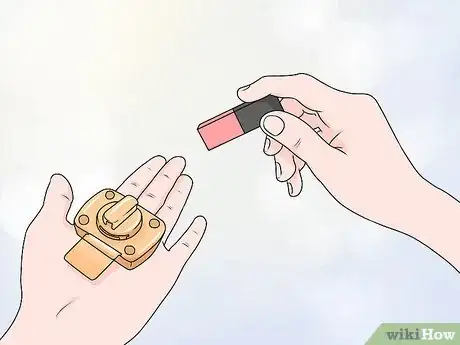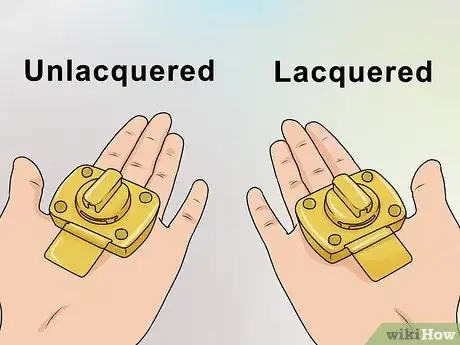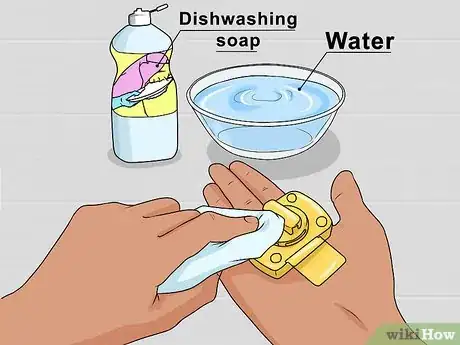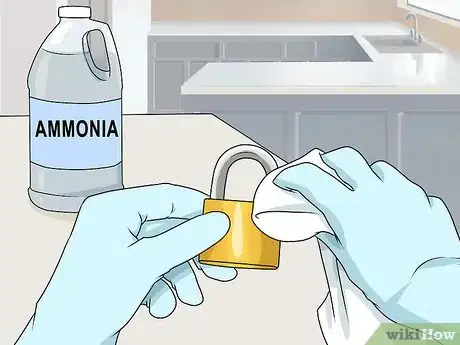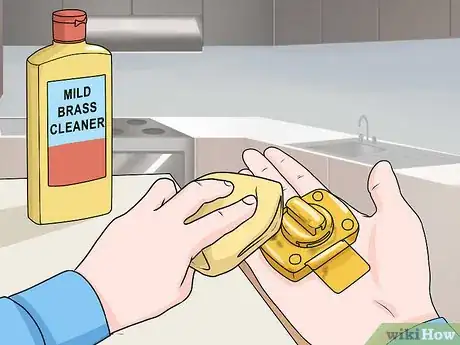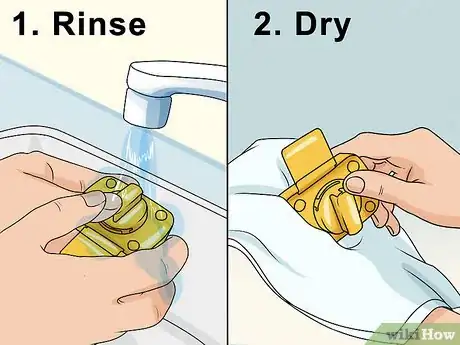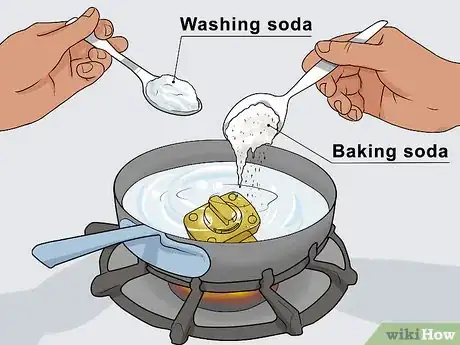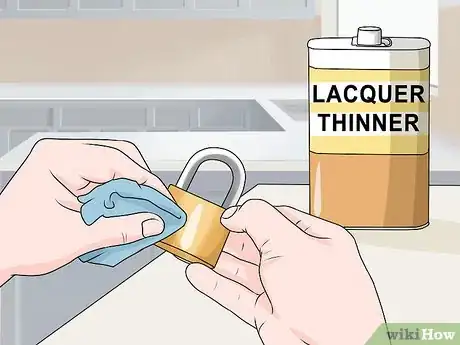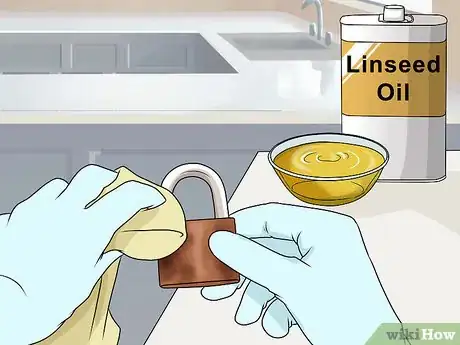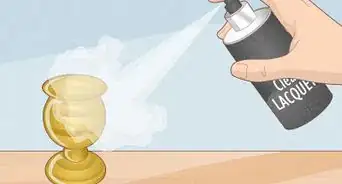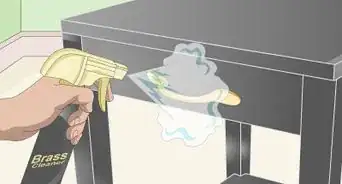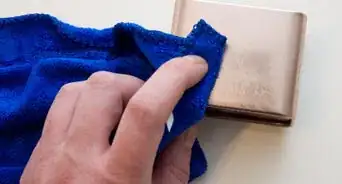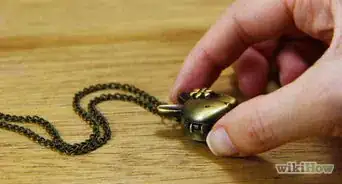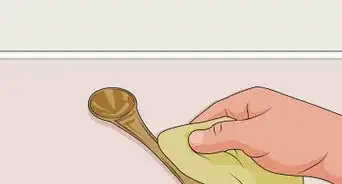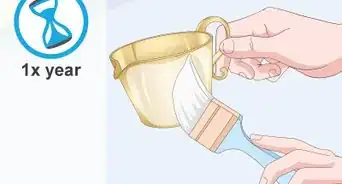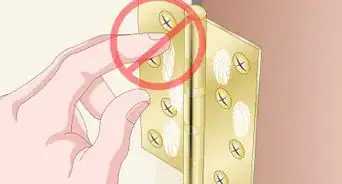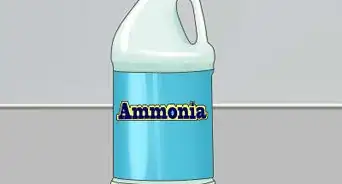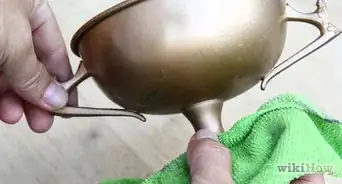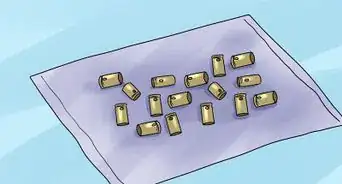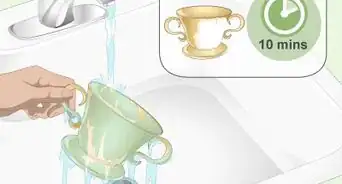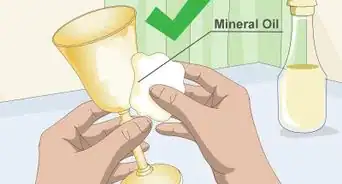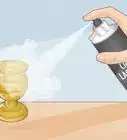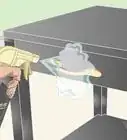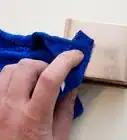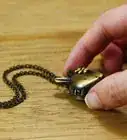This article was co-authored by Alicia Sokolowski. Alicia Sokolowski is a Green Cleaning Specialist and the President and co-CEO of AspenClean, a green cleaning company in Vancouver, British Columbia. With over 17 years of experience, Alicia specializes in creating a healthier, green alternative to chemical-based cleaning products and services. AspenClean develops and manufactures its own line of 100% Natural, EcoCert® certified, and EWG verified™ cleaning products. AspenClean’s glass cleaner was voted Parent’s Green Pick 2020 by readers of the Parents’ magazine. Alicia holds a CPA designation and a Bachelor’s degree in Commerce and Finance from the University of Toronto.
This article has been viewed 97,363 times.
To clean brass-plated items, you need to be fairly gentle. If you scrub too hard or use too harsh a chemical, you can take the plating off.[1] Start by using soap and water. If your piece is lacquered, you shouldn't use anything else. If it's not lacquered, you can move on to slightly stronger chemicals, such as ammonia or a mild brass cleaner. You can also take steps to remove the lacquer if you prefer.
Steps
Cleaning with Soap and Water
-
1Check to see if the brass is solid. You'll want to clean brass-plated and solid brass items differently, so it's important to check first. The easiest way to check is to try to stick a magnet to it. Magnets won't stick to solid brass, but they will stick to brass-plated steel and other metals.[2]
- If the brass is solid, you can follow some of the same general steps. However, solid brass can take slightly harsher chemicals, such as a strong brass cleaner, rather than just a mild one.
-
2Look for lacquer. Brass-plated objects often have a thin coating of lacquer to help protect the brass. If the brass-plated item is lacquer-coated, you should stick to soap and water when cleaning it. Anything else will remove the lacquer.
- Unlacquered (not comparable) items will tarnish over time, while lacquered items won't. However, lacquered items may show tiny black spots, as the lacquer cracks.
- You can also test an inconspicuous place with a bit of brass cleaner. If it leaves a black spot on your rag, that means it's not lacquered. If it doesn't, it's likely lacquered, and you shouldn't clean it with anything harsh.
Advertisement -
3
Removing Tougher Grime on Items without Lacquer
-
1Try ammonia. Ammonia is gentle enough that it won't remove the brass-plating, but strong enough that it will remove much of the grime. Use a soft cloth to apply the ammonia to the brass. Rinse it off thoroughly.
-
2Use a mild brass cleaner meant for brass-plate. Another option for heavier tarnish (once you've cleaned the item with soap and water, plus dried it) is a brass cleaner that is designed to be used on brass-plated items. Rub it in with a soft cloth, and wash it off with warm water.[5]
- Test the cleaner first in a hidden area.
-
3Always dry the item thoroughly. Once you've cleaned the item and rinsed off any excess cleaner, always take the time to dry it thoroughly.[6] You don't want to leave it wet, so use a soft cloth to dry it off.
Caring for Plated Brass
-
1Take off lacquer by boiling. If your brass-plate is lacquer-coated, you may have reason to want to remove it. Cracking in the lacquer can lead to tarnishing on the surface beneath the coating. The best way to remove lacquer is through boiling.[7]
- Place the item in a pot filled with the water. The pot should not be aluminum. Add a couple of spoonfuls of both washing soda and baking soda. Boil the item.
- You can either boil the item until the lacquer comes off, or you can heat it up enough that the brass expands, then let it cool. Once it cools, the lacquer should be easy to peel off, since it won't shrink back like the brass does while cooling.
-
2Remove lacquer with a lacquer thinner. Lacquer thinner will also remove the coating if you'd like to take it off your brass-plated item. Rub the thinner in. Keep rubbing until you see the lacquer coming off the brass.
-
3Use oil to prevent tarnishing. If your brass-plated piece tarnishes easily, you can use oils to help prevent that. On a clean, dry item, rub in a little linseed oil or mineral oil. Use a soft cloth to prevent scratching, and only apply a thin coating.[8]
Expert Q&A
Did you know you can get expert answers for this article?
Unlock expert answers by supporting wikiHow
-
QuestionHow do I avoid scratching something that's brass-plated?
 Alicia SokolowskiAlicia Sokolowski is a Green Cleaning Specialist and the President and co-CEO of AspenClean, a green cleaning company in Vancouver, British Columbia. With over 17 years of experience, Alicia specializes in creating a healthier, green alternative to chemical-based cleaning products and services. AspenClean develops and manufactures its own line of 100% Natural, EcoCert® certified, and EWG verified™ cleaning products. AspenClean’s glass cleaner was voted Parent’s Green Pick 2020 by readers of the Parents’ magazine. Alicia holds a CPA designation and a Bachelor’s degree in Commerce and Finance from the University of Toronto.
Alicia SokolowskiAlicia Sokolowski is a Green Cleaning Specialist and the President and co-CEO of AspenClean, a green cleaning company in Vancouver, British Columbia. With over 17 years of experience, Alicia specializes in creating a healthier, green alternative to chemical-based cleaning products and services. AspenClean develops and manufactures its own line of 100% Natural, EcoCert® certified, and EWG verified™ cleaning products. AspenClean’s glass cleaner was voted Parent’s Green Pick 2020 by readers of the Parents’ magazine. Alicia holds a CPA designation and a Bachelor’s degree in Commerce and Finance from the University of Toronto.
Green Cleaning Specialist
-
QuestionHow do I remove rust from brass-plate?
 Hayley DerrickCommunity AnswerNeutralize the acid. Acids can corrode brass plating, so before you scrub the rust with lemon juice or vinegar, try rubbing it off with a microfiber cloth. You may have enough success to allow you to forego the acidic cleaner, especially if you soak the cloth in a mixture of dish soap and water before scrubbing.
Hayley DerrickCommunity AnswerNeutralize the acid. Acids can corrode brass plating, so before you scrub the rust with lemon juice or vinegar, try rubbing it off with a microfiber cloth. You may have enough success to allow you to forego the acidic cleaner, especially if you soak the cloth in a mixture of dish soap and water before scrubbing.
References
- ↑ Alicia Sokolowski. Green Cleaning Specialist. Expert Interview. 15 September 2020.
- ↑ https://www.bobvila.com/articles/how-to-clean-brass/#.WQBm-8a1vIU
- ↑ Alicia Sokolowski. Green Cleaning Specialist. Expert Interview. 15 September 2020.
- ↑ Alicia Sokolowski. Green Cleaning Specialist. Expert Interview. 15 September 2020.
- ↑ https://www.hunker.com/12362355/how-do-i-clean-brass-or-brass-plated-fixtures
- ↑ Alicia Sokolowski. Green Cleaning Specialist. Expert Interview. 15 September 2020.
- ↑ https://www.yellowbrickhome.com/how-to-de-lacquer-age-brass/
- ↑ https://www.bobvila.com/articles/how-to-clean-brass/#.WQB2aca1vIW
- ↑ Alicia Sokolowski. Green Cleaning Specialist. Expert Interview. 15 September 2020.
About This Article
You’ll want to be careful when cleaning brass-plated items so you don’t damage the surface. All you need to do is wipe your item with soapy water and a soft cloth. Just be gentle so you don’t rub off the brass or lacquer coating. For tougher stains, add a little ammonia to your cloth and wipe it gently. However, avoid ammonia if your brass-plated items have a lacquer coating. Remember to rinse and dry it once you’re done. To learn how to remove lacquer from your brass-plated items, read on!

